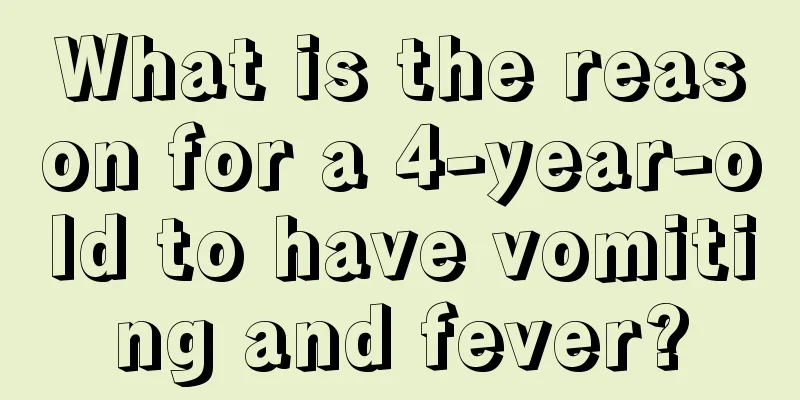Why do children get rashes? Common types of rashes in children

|
There are many diseases that may cause skin allergies in children. In addition, medication, diet, and adverse environmental factors are all causes of skin allergies. Many children will have measles, rashes, blisters, etc. on their skin. The reasons are also varied. Since this is the first time that a child’s skin has such a disease, most of them are acute. The disease comes and goes quickly. It may spread all over the body within a few hours, but it may also disappear automatically in a short time. Be careful to distinguish. 1. Measles Measles is commonly known as "beating bran". It is a respiratory infectious disease caused by the measles virus. Transmitted through droplets of nasopharyngeal secretions. After a healthy child comes into contact with a measles patient, it takes about 10 days to half a month for the child to develop the disease. This period of time is called the incubation period. The disease begins with symptoms similar to a cold, such as fever, cough, runny nose, and tears. On the second or third day of fever, many small white dots (as big as a needle tip) are seen on the red and congested mucosal mucosa of the child's mouth, which are called measles mucosal spots. This is the earliest and most reliable basis for diagnosing measles. This period of time (from the onset of fever to the appearance of rash) is called the prodromal period, which lasts about 3 or 4 days. After the prodromal period (i.e. 3 or 4 days from the onset of fever), the rash phase begins. During the rash period, the body temperature is higher, the eyes are sensitive to light and tearful, there is a lot of eye secretion, the runny nose and cough become more severe, and a rash begins to appear at the same time. The rash is rose-colored macules that fade with finger pressure. It first appears on the skin in front and behind the ears, neck, cheeks, and forehead. The rash then gradually increases in number and spreads to the chest, back, abdomen, and finally the limbs. After about 3 or 4 days, the rash also appears on the palms and soles of the feet, indicating that the rash has completely broken out. The rash may gradually merge from scattered spots into flakes, but healthy skin can still be seen between the rashes. The rash begins to subside on the 5th day after onset and completely disappears on the 7th day, leaving behind fine scaling (like bran) and brown marks (i.e. pigmentation). Later, the fever subsided, the cough eased, and the appetite increased. The total white blood cell count was low. The entire course of measles lasts about 10 days. If the rash occurs together with pneumonia or laryngitis, the course of the disease will be longer and the condition will be more serious. 2. Rubella Rubella is one of the common respiratory infectious diseases in children. It is caused by the rubella virus. It is more common in preschool children aged 3 to 7 years old and is prevalent in spring and autumn. Rubella starts with a moderate fever and a rash appears about 1 day later. The rash is small pink maculopapules scattered on the trunk and less on the limbs. The child's general condition was good. Apart from fever, he had a runny nose and a slight cough, but no systemic symptoms of poisoning. The rash subsided after 2 or 3 days, with no desquamation or pigmentation. The lymph nodes behind the ears and on the occipital region are slightly enlarged, complications rarely occur, and the total white blood cell count is low. 3. Roseola infantum Also known as infantile roseola, commonly known as "roseola infantum", is also a respiratory disease caused by a virus. It usually occurs in spring and autumn, and is often sporadic in children around one year old. The disease has an acute onset, with high or moderate fever in the prodromal phase. The symptoms may last for about 3 or 4 days, with runny nose, mild cough or diarrhea, but the child's general mental state is still good. Some children have a bulging anterior fontanelle and become irritable when they have a fever. The body temperature will drop after 3 or 4 days of fever, and scattered "measles" or "scarlet fever"-like rashes will appear on the chest and abdominal skin. This "rash after fever subsides" is the characteristic of this disease, accompanied by swollen lymph nodes behind the ears and low white blood cell test results. 4. Scarlet fever Commonly known as "shazi", it is an acute infectious disease caused by beta-hemolytic streptococci, which occurs sporadically or in small epidemics in winter and spring. Children aged 3 years and above to school age are susceptible to this disease. It is transmitted by carriers or sick children through respiratory droplets. The incubation period is about 2 to 7 days. The disease occurs suddenly with a high fever of over 39°C. The patient complained of pain in the throat and larynx, redness and swelling of the tongue papillae, nausea, vomiting and other symptoms. On the second day, a chronic, scarlet, tiny rash appeared on the skin all over the body, which faded when pressed and was slightly itchy. No healthy skin can be seen between the rashes. It is most obvious on the chest and back. If not treated promptly, the rash will disappear after 3 to 7 days and will peel off in large flakes. The total white blood cell count was high. This disease must be treated with large amounts of intramuscular penicillin at an early stage, which should be injected for more than 1 week. If this disease is not treated thoroughly, acute nephritis or rheumatism may occur after 2-3 weeks. 5. Chickenpox It is a respiratory infectious disease caused by a virus. It is highly contagious, but rarely occurs more than twice in a person's lifetime. This disease often occurs in winter and spring, and is more common in infants and young children. The incubation period is about two weeks. The disease begins with a mild cough and fever (mild or moderate), and 24 hours later a rash appears on the head and trunk. The order of appearance of the rash is papules → herpes → scabs. Acne appears in batches, so different forms of acne can be seen on the same area of skin. The appearance of rashes may be more or less severe. Mild cases are often ignored by parents, while severe cases may cause high fever, varicella encephalitis, convulsions or coma. Check the total white blood cell count is low. |
<<: What should I do if my child has allergies and itching all over his body?
>>: How to treat urticaria in children?
Recommend
What to do if a two-year-old baby has a fever at night
When a two-year-old baby has a fever in the middl...
What is the cause of high platelet count in children?
If a child's platelet count is high, parents ...
How to treat baby's fever and convulsions?
Now we all have an understanding of baby's di...
Treatment of otitis media in infants and young children
I believe that everyone is familiar with otitis m...
Why does my three-month-old baby have smelly ears?
The health of babies is extremely important to pe...
Children's nosebleed in autumn
The physical health of children is very important...
Children have yellow eye mucus due to inflammation of the eyes
Many parents feel that children’s problems are ne...
Ten-month-old baby's intelligence
Although the baby is very cute, cannot speak yet,...
At what age is it best for children to take anthelmintics?
For someone like me who was born in the 1980s, wh...
What are the benefits of eating bird’s nest for children?
Many parents usually eat some bird's nests at...
The relationship between children's "three measurements" and physical health
Of course, parents don’t want their children to g...
How to treat baby's painful urination
Many babies feel pain when they urinate, which af...
What to do if your nine-month-old baby has diarrhea
A nine-month-old baby may have diarrhea due to ea...
What to do if your three-year-old baby has phlegm in his throat
Some children will have symptoms of coughing and ...
What to do if children have itchy blisters on their hands
In fact, many people have experienced small blist...









